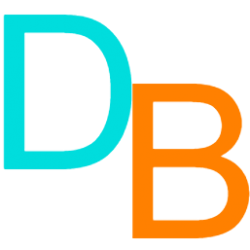 Major Depressive Disorder is the prototypical depressive disorder. When you talk about depression, many people are thinking about Major Depressive Disorder. It is also known as Major Depression and Clinical Depression. Major Depression is just one of the 7 types of depression.
Major Depressive Disorder is the prototypical depressive disorder. When you talk about depression, many people are thinking about Major Depressive Disorder. It is also known as Major Depression and Clinical Depression. Major Depression is just one of the 7 types of depression.
Prevalence
Major Depressive Disorder affects about 7% of adults and 13% of teenagers, making it a common mental illness. It also affects a person’s functioning at home, work, and school. Major Depression also disrupts relationships and self-care. In other words, Major Depressive Disorder can be devastating and life-altering. In some cases, Major Depression can lead to completed suicide, and is a serious consequence of this mental disorder.
Major Depressive Episode
To meet the criteria for Major Depressive Disorder, you must have a Major Depressive Episode lasting for at least 2 weeks. In addition, you must have poor functioning at work, school, relationships, and self-care.
To meet the criteria for a Major Depressive Episode, the episode lasts most of the day and most days of the week, and the episode must include either depressed mood or anhedonia (loss of pleasure and interest in things). In addition, the episode must have at least 5 of the following 9 symptoms for at least 2 weeks:
- Depressed mood
- Problems Sleeping (multiple early morning awakenings)
- Loss of Interest (anhedonia)
- Feelings of Guilt or hopelessless
- Low Energy
- Poor Concentration
- Poor Appetite
- Psychomotor agitation (revved-up) or retardation (slowed-down)
- Suicidal thoughts
SIGECAPS
The easy way to memorize the symptoms of depression is to use to the following mnemonic:
SIGECAPS
- S: stands for sleep
- I: stands for interest
- G: stands for guilt or hopelessness
- E: stands for energy
- C: stands for concentration
- A: stands for appetite
- P: stands for psychomotor agitation or retardation
- S: stands for suicidal thoughts
So when you have to consider a Major Depressive Episode, use the mnemonic SIGECAPS, where you have at least 5 of the 9 symptoms. In addition, one of the symptoms must include either depressed mood or anhedonia.
Treatment
The treatment for Major Depressive Disorder begins with psychotherapy. Specifically, interpersonal psychotherapy (IPT) and cognitive behavioral therapy (CBT) are the most-researched treatment approaches for mild to moderate depression. For mild to moderate depression that does not respond to psychotherapy, then antidepressant medication treatment may be necessary. These include treatment with SSRIs (Selective Serotonin Reuptake Inhibitors) and SNRIs (Serotonin Norepinephrine Reuptake Inhibitors).
For severe depression, psychotherapy is often not effective initially. This is because the severe depressive symptoms prevent active participation in therapy due to social isolation, low energy, poor concentration, and poor decision-making. Therefore, antidepressant medication is the treatment of choice for severe depression. Once the antidepressant medication reduces the depressive symptoms, then psychotherapy may be added to help further decrease the symptoms and improve functioning.
So how do you determine the severity of a Major Depressive Episode, and how do you measure it? The answer will be published in an upcoming article on Depression Boss.
photo credit: Send me adrift. Empty via photopin (license)

Carlo Carandang, MD, is a psychiatrist who has over 15 years experience treating patients with depression and anxiety. In addition, Dr. Carlo has done research and taught students and doctors about depression and anxiety. His other popular website, AnxietyBoss.com, has received over 5 million views to date.
